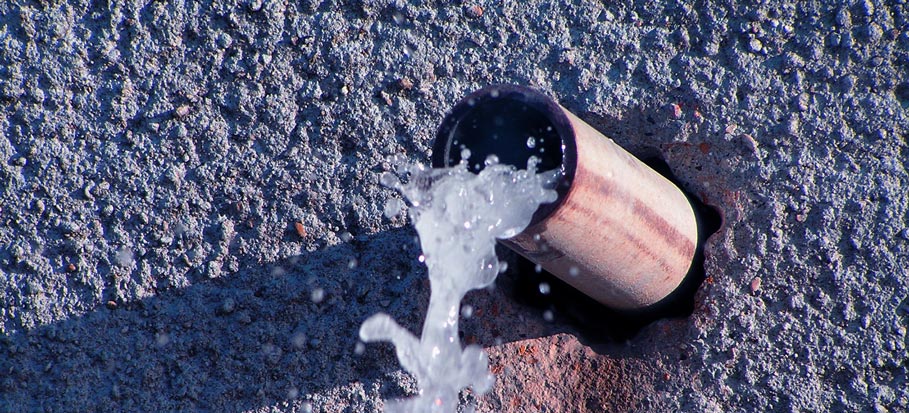We've unearthed the article involving Hacks to detect leaks directly below on the web and figured it made sense to relate it with you here.

Early detection of leaking water lines can alleviate a prospective calamity. Some small water leaks might not be visible.
1. Check Out the Water Meter
Every home has a water meter. Inspecting it is a guaranteed manner in which aids you uncover leakages. For starters, switch off all the water sources. Make certain no one will certainly purge, make use of the tap, shower, run the washing device or dishwashing machine. From there, go to the meter and also watch if it will transform. Considering that no one is utilizing it, there should be no activities. If it relocates, that suggests a fast-moving leakage. Similarly, if you spot no changes, wait a hr or more and check back again. This suggests you might have a slow-moving leak that might also be underground.
2. Check Water Usage
Assess your water bills and track your water usage. As the one paying it, you need to see if there are any kind of discrepancies. If you spot sudden changes, despite your consumption being the same, it indicates that you have leakages in your plumbing system. Bear in mind, your water costs should fall under the same array each month. A sudden spike in your costs shows a fast-moving leakage.
At the same time, a stable increase monthly, despite having the exact same routines, reveals you have a slow leakage that's also slowly rising. Call a plumber to extensively examine your building, specifically if you really feel a cozy location on your floor with piping underneath.
3. Do a Food Coloring Test
When it involves water intake, 30% originates from toilets. Examination to see if they are running appropriately. Decrease flecks of food shade in the storage tank and wait 10 mins. If the color in some way infiltrates your bowl throughout that time without flushing, there's a leak in between the tank as well as dish.
4. Asses Outside Lines
Do not neglect to examine your outdoor water lines also. Examination faucets by connecting a yard hose pipe. Must water permeate out of the connection, you have a loose rubber gasket. Change this and make sure all connections are limited. If you've got a lawn sprinkler, it will certainly help get it professionally analyzed as well as kept annually. One tiny leak can lose lots of water and spike your water expense.
5. Analyze the scenario and also evaluate
Property owners ought to make it a habit to check under the sink counters and even inside cupboards for any kind of bad odor or mold growth. These 2 warnings show a leak so prompt attention is called for. Doing regular examinations, also bi-annually, can save you from a major issue.
If you recognize your house is currently old, maintain a watchful eye on your heating units, hose pipes, pipelines and so on. Check for discolorations and also weakening as a lot of pipes and also home appliances have a life expectancy. They will certainly additionally naturally degrade as a result of deterioration. Don't wait for it to intensify if you suspect dripping water lines in your plumbing system. Call a professional plumber today so you do not wind up with an awful mess in your house.
Early detection of dripping water lines can mitigate a potential disaster. Some small water leaks might not be visible. Inspecting it is a proven method that helps you discover leaks. One small leakage can waste bunches of water as well as spike your water bill.
If you think leaking water lines in your plumbing system, don't wait for it to intensify.
WARNING SIGNS OF WATER LEAKAGE BEHIND THE WALL
PERSISTENT MUSTY ODORS
As water slowly drips from a leaky pipe inside the wall, flooring and sheetrock stay damp and develop an odor similar to wet cardboard. It generates a musty smell that can help you find hidden leaks.
MOLD IN UNUSUAL AREAS
Mold usually grows in wet areas like kitchens, baths and laundry rooms. If you spot the stuff on walls or baseboards in other rooms of the house, it’s a good indicator of undetected water leaks.
STAINS THAT GROW
When mold thrives around a leaky pipe, it sometimes takes hold on the inside surface of the affected wall. A growing stain on otherwise clean sheetrock is often your sign of a hidden plumbing problem.
PEELING OR BUBBLING WALLPAPER / PAINT
This clue is easy to miss in rooms that don’t get much use. When you see wallpaper separating along seams or paint bubbling or flaking off the wall, blame sheetrock that stays wet because of an undetected leak.
BUCKLED CEILINGS AND STAINED FLOORS
If ceilings or floors in bathrooms, kitchens or laundry areas develop structural problems, don’t rule out constant damp inside the walls. Wet sheetrock can affect adjacent framing, flooring and ceilings.
https://www.servicemasterbyzaba.com/blog/how-to-detect-water-leakage-in-walls/

I was shown that write-up about Leaking water lines from an associate on a different website. Are you aware of another individual who is interested in the niche? Please feel free to share it. Thanks for going through it.
Comments on “How to Check If Your Home Has a Hidden Leakage”